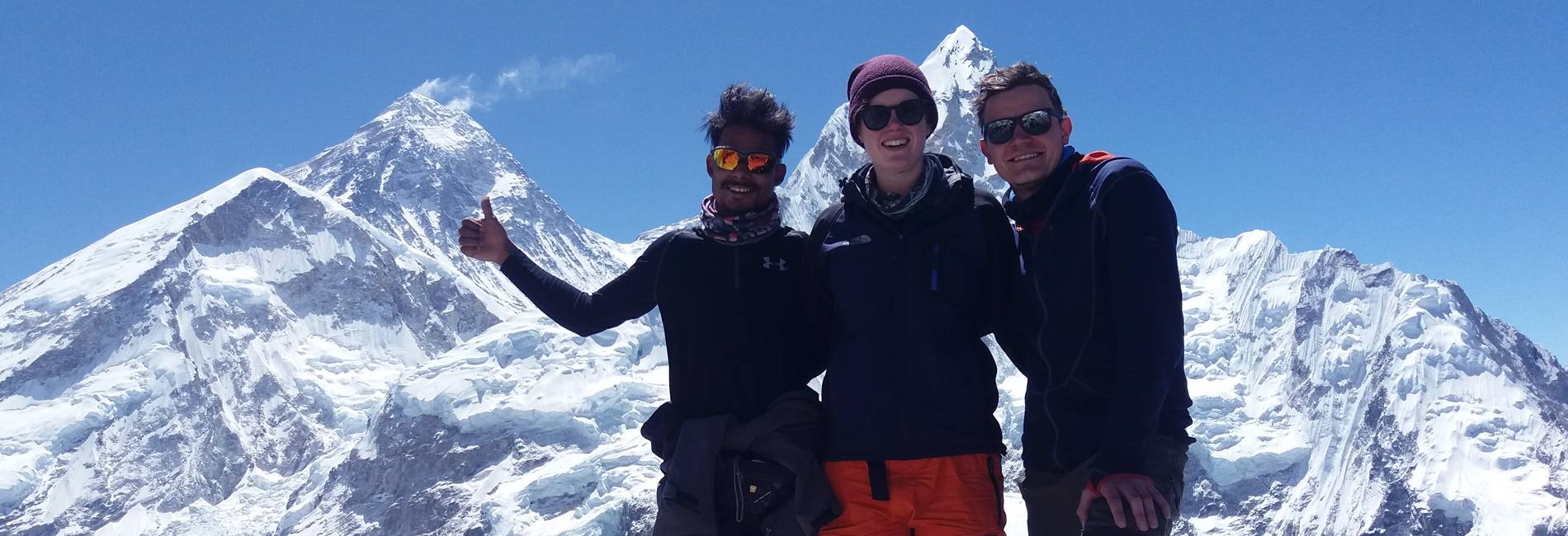The scenery of the Everest Base Camp trek is bucket-list worthy itself, and spring is the ultimate season to challenge that adventure. March to May are great months to explore the Everest Region. Most days, the weather is good, with the sky clear, and rhododendron in full bloom during spring.
Assume you’re on the point of embarking on the hike to Everest Base Camp this spring. If so, you’ll want to be conscious in advance of time of what to expect at the trail, a way to physically as well as mentally put yourself together your self for this journey, and why this is the ideal time of year to assure the adventure of a lifetime.
That’s Why Spring is the Perfect Season for the Everest Base Camp Trek
Everest is cold in spring, but at high altitude with a clear sky, it can be very cold. (Spring as in good weather and a tight hold on the trails, the season between bone-chilling winter and iffy monsoon.)
And one of the delights of trekking in spring is the chain of the Himalayas filled with colorful flowers. Spring – Rhododendron blooming Spring means the entire rhododendron forest is alive with red, pink, and purple, and when you look against the bright blue sky, the bushes seem even closer as they wrap themselves around you when you walk up the gnarled hills with those big peaks looming in the distance. It’s more consistent weather and there’s little likelihood of being snowed on, or having icy wind biting at the neckatas least till the season unfurls. It all sounds good, but I’m telling you, spring is the best time to go for a hike, and this is why: if you are a sun and views type of person.
What You’ll See on the Way
One of the maximum famous treks in Nepal, A traditional Everest Base Camp trek Itinerary starts with a sightseeing excursion to the UNESCO global Heritage sites of Kathmandu, followed by an adventurous scenic flight to Lukla, a Gateway city in the heart of the Everest region. The climb out of Lukla leads trekkers past Sherpa villages, verdant forests, and river valleys and then upward to the better regions towards base camp.
Nor will you meet with too many memorable landmarks on the path to Everest Base Camp. One of the first prevention factors is in Phakding, a picturesque village on the banks of the Dudh Koshi River. From Phakding, you will walk to Namche Bazaar, which is an interesting Sherpa village with a market, steps, a visitor residence, and a monastery to study Everest & different peaks. It is also a popular acclimatization town as trekkers head higher up the trekking route after climbing up from Manjo.
Sunday, Day Thirteen. From Namche, we trek better to Tengboche, where Tengboche Monastery teeters on the brink and Everest, Lhotse, and Ama Dablam stand shielded. The trail then passes through the villages of Dingboche and Lobuche to aid gentle acclimatisation and allow some good rest days. Eventually, you’re going to make it to Gorak Shep, and you’re spending the night here to get a bit of rest, and then you’ll make that final push up to Everest Base Camp itself.
Getting to Everest’s base camp is an achievement in its own right: you’re in an amazing amphitheatre of high mountains with icefalls of glacial ice all around. Base camp is generally a beehive of activity as climbers pack their gear for a summit push, and trekkers whose prime objective may be nothing more than to say they trekked to the base of the world’s most famous peak revel in the fact that they’ve arrived.
Spring Weather: What to Expect
One of the positives that comes with trekking to Everest Base Camp in the spring and autumn is the weather. And if you’re at a lower altitude (closer to Namche Bazaar), you too can expect those 5 – 15 degree temperatures. It is going to get colder, especially at night…up above we’d have minus 10 degrees!
Anticipate cold trail temps (hovering darn close to or just below freezing) in the wee hours for those early starts and a frosty nip to the air when you’re up top. This time of the year even has fewer clouds on the horizon, and trekkers might also experience some lovely mountain views in the mornings under a clear sky. Winds can pick u, and it gets pretty cold at elevation in the afternoons.
The early months of spring are dry, but spring is by no means very dry, and the months which follow are among the moistest of the Wet Zone, while the monsoon is exceedingly late (May). All in all, that means you’ll probably see a few passing afternoon showers, but you won’t be wet most of the time, and you’ll have clear nights. Asusuall the most popular season to do it in is in the spring when the weather is mostly clear and the views are probably the nicest it will be all year round.
Lodging and Food on the Trek
EBC trek has the following, Teahouses and lodges etc. are the lodges for EBC trek being trekkers’ base for the trek. Here in these unpretentious but very welcoming guesthouses, there is a warm bed and basic facilities, and higher yet, a sleeping bag will protect you from the cold. Nepal Trekking in Spring Spring is a hugely popular time to be in the mountains in Nepal, and teahouses are often very crowded, particularly in the busiest season weeks. “You for sure want to prebook, or else you’re going to be hiking with a gguideand you’re going to if you want to be able to get a bed,” he said.
Acclimatization and Health Tips
And do not overlook altitude sickness when trekking to the Everest base camp, as you will reach altitudes of over 5,000 meters. Walking the Inca Trail, the altitude allows for altitude sickness to be minimised by not hurrying and preventing time for our bodies to adjust to the heights by resting at unique distances on the trail and giving our bodies a chance to carry out the altitude. You will want to take a couple of acclimatization days in Namche Bazaar and Dingboche so that your body can get used to less oxygen in the way of air.
You are instructed to inform your guide of their first signs, and to be ready to retreat if you actually start feeling the symptoms of altitude sickness: headache, dizziness, nausea. You can’t ever be too careful with altitude.
“Drinking water and eating and being well-rested, well-recovered in terms of the last time you ate or drank alcohol, or the last time you exercised, will also make it easier for your body to adjust,” Shika said.
Conclusion
If you’re hiking to Everest Base Camp next spring, it’s likely to be an adventure to remember. You are alvragae 14-16k alum pass altitude is 16.5k.. The clear blue skies of an unpolluted atmosphere and an untapped hinterland were just about universal. “But to whoever, fully prepared, hydrated, a nd acclimatized, to acclimatize yourself well, these are the kind of experiences during the rest of your life you will take with you, you’ll never forget. Get in ahead of the crowd on one of the world’s most written-about trekking trails, whether you’re a novice trekker or working on your millionth.
Trek to Everest Base Camp and be left in awe beneath the towering Himalayas.

